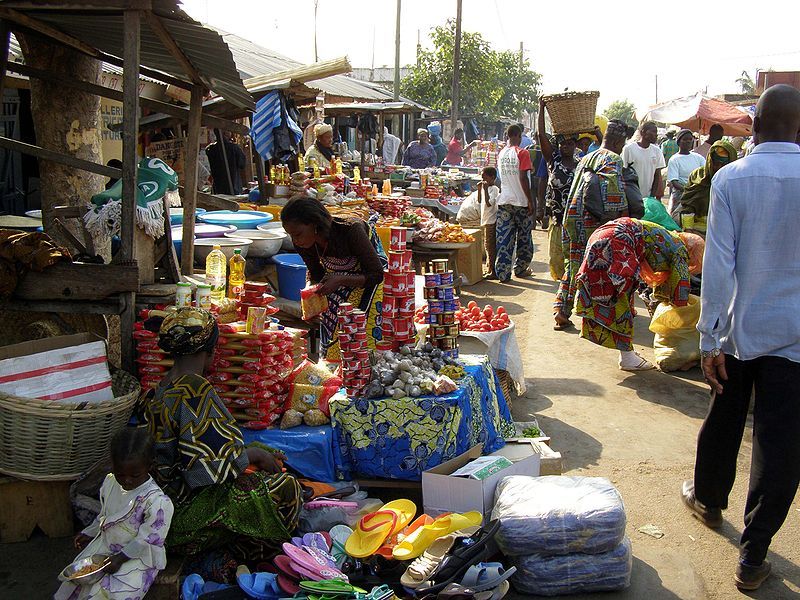The Set-Up The following lesson is meant for a 3rd grade classroom and will come at the very end of a ten day unit focusing on three West African countries: Ghana, Togo, and Benin. Throughout the unit students will discover where these countries are located in the world and in relation to Portland, Oregon, as well as their various geographic features. They will also spend a considerable amount of time learning about the people that live in these countries and what their lives are like. The following market simulation lesson will act as a capstone activity for students who will be able to pretend to live in the countries they have been studying. This lesson borrows heavily from a suggested unit of study for Talented and Gifted 3rd graders in New York City to whom all credit is due!

Content Students will be learning about basic economic terms through the example of a typical West African marketplace. They will learn about needs/demand, supply, and bartering through this simulation in which they will discover what can be sold, how it is sold (e.g. bartering, use of West African francs, typical vendor stalls), and who does the selling.
Process The lesson will begin with the instructor explaining that today the classroom will become a West African market and students will get to pretend to go shopping as if they were in Ghana, Togo or Benin! The instructor will explain expectations and will model each step beforehand (building on the modeling already done in a previous lesson).
Students will be organized into teams based on their table groups. Each group will be responsible for selling/bartering specific items. Students will need to decide who will do the selling and who will do the buying in their groups (will break down to about two and two for most teams). Those students who will be buying for their team will need to record their transactions on a “Barter Ledger.”
At the end of the simulation students will return to their seats and will see if their team acquired enough ingredients for their recipe. They will then participate in an instructor-directed discussion on economic terms through the following questions:
- Were you successfully able to obtain all of the necessary ingredients for your recipe? (needs)
- Was there enough of all the different ingredients available to barter? (supply)
- What was it like to actually trade items or to come up with different values for each item? (barter)
- Was there any particular item that was in limited supply but that everyone wanted? (demand)
Product Student actions and discussions during the simulation and their reflection on the lesson as a whole will constitute the “product” of the lesson.
Evaluation Student mastery of content will be evaluated through instructor observation and informal checks for understanding (especially during the post-simulation discussion).
Levels of Thinking Required of Students During the simulation students will be asked to engage in higher order thinking (evaluating & creating) as they decide what to buy and sell, for how much, and/or what would constitute an equitable trade. During the discussion students will need to analyze and evaluate their own actions and experiences at market.
Student Choices Students will choose how much to buy and/or what to trade for needed ingredients as well as how much to sell and/or what to trade for the items they have to sell. Both the recipe and a random selection of bartering cards will be given to each team by the instructor.
The Plan Right Now Having discussed this lesson idea with several insightful peers I realize I have a lot of backwards planning to do in order to get my students to be active participants in this simulation. I will need to build in a lot of group work throughout my unit in order to get them familiar with this type of collaboration. I will also need to do a lot of modeling for students leading up to this lesson—including some non-examples—as well as provide numerous videos and firsthand accounts of West African market experiences. Given my short time-frame (~45 minutes), I am also thinking about devoting one lesson to getting ready for the simulation (e.g. creating the materials, going over expectations, providing examples & non-examples of market behaviors), one lesson to the simulation itself, and a third lesson to debrief about the simulation and to go over the target economic terms.
Image Credit: By Grete Howard (Originally uploaded to Flickr as Kara-2) [CC BY 3.0 (http://creativecommons.org/licenses/by/3.0)], via Wikimedia Commons
